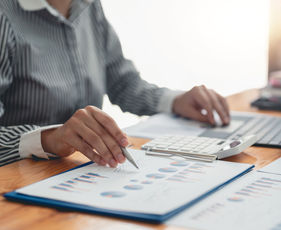- UK income inequality is expected to fall in 2023 and 2024.
- But due to high interest rates, income inequality is expected to reach a record high in 2027.
- The top 1% of earners in the UK currently receive nearly 9% of the total national income.
With 28% of UK adults saying they couldn’t afford to eat a balanced diet in late 2022, it is natural to assume that the cost of living crisis has dramatically increased economic inequality. The reality, however, is slightly more complicated.
Moneyzine.co.uk can reveal that the UK’s overall income inequality is actually in the process of decreasing - but this only tells part of the story. Because while the short-term looks surprisingly positive for income inequality, experts expect inequality to reach an all time high by 2027.
Short-term gains for low-earners
A recent study of UK household income has found a surprising trend. Not only was income inequality actually lower in 2020 than it was in 2008 - the report found evidence that inequality was likely to decrease over the next two years.
The explanation is simple: Government efforts to support the most vulnerable will give a boost to low-earners, with benefits being uprated by 10.1% in April on top of targeted cost of living payments. This will close the gap between rich and poor in the short-term, and we will see a short-term fall in relative poverty - as the average income will actually fall more than that of low-income households.
But while essential, these Government interventions are just a band-aid. And as the band-aid slips, we will start to see the real impact of inflation on UK inequality.
Long-term gains for high earners
These reductions in income inequality will be produced by low-earners catching up to middle-earners. But we also have to factor in the dramatic advantage high-earners have, as this will be the engine of growing inequality in the coming years.
Between 2021-2022, 37% of disposable income went to the top 20% of UK earners, while the bottom 20% took just 8% - and the top 1% took nearly 9% of total earnings.
This allows high-earners to disproportionately benefit from investments, savings and asset ownership. So with inflation soaring, high-earners will start to see a substantial increase in their incomes from investments and savings. And it is predicted that gross income from interest receipts will rise by £65 billion between 2021 and 2024.
The net result will not be pretty. By 2027, UK income equality is set to reach a record high of 40.8%. This is also the year that real wages are expected to return to Q1 2022 levels - while the average income is still expected to be below pre-pandemic rates in 2028.
Ultimately, this paints a very bleak long-term outlook. By 2027-2028, child poverty is expected to reach its highest rates since 1998 - with 170,000 more children in poverty than 2021. 55% of families with three or more children will be in child poverty, along with 77% of those with four or more children.
This data sheds new light on the cost of living crisis. While most coverage focuses on the short-term struggles, it suggests we might be better served by a longer-term view that understands how income inequality and poverty will evolve over time.Jonathan Merry, CEO of Moneyzine.co.uk
Contributors
.jpg)



.jpg)
.jpg)

.jpg)